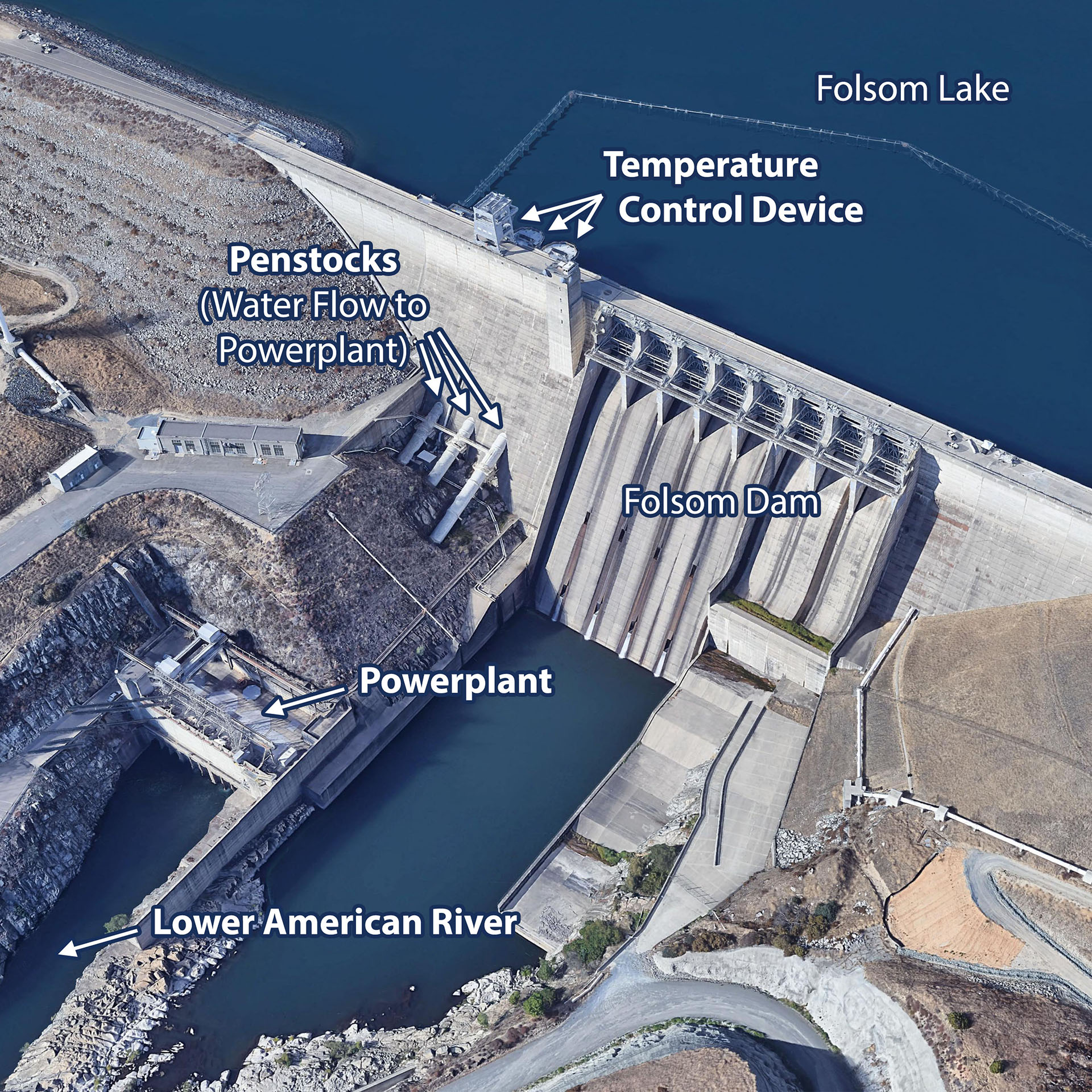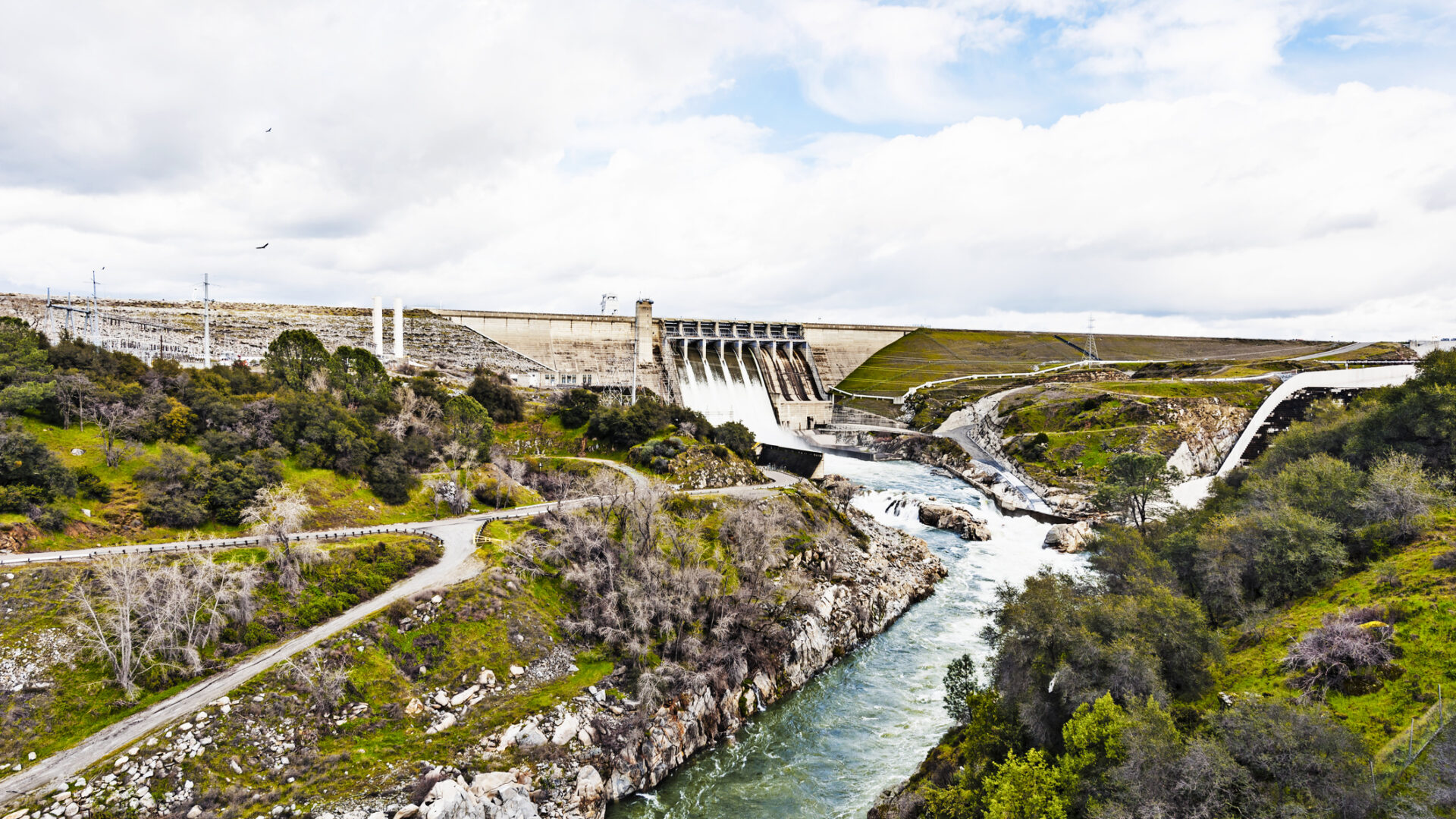This week, the U.S. Bureau of Reclamation initiated a Folsom Power Bypass to reduce river water temperatures and protect salmonids as spawning season begins on the Lower American River.
A power bypass allows Reclamation to access and release cold water below the power unit
penstocks at Folsom Reservoir, thereby reducing river water temperatures to benefit rearing steelhead and spawning fall-run Chinook salmon. This is especially critical given that the LAR this summer was operated to a temperature of 71° F due to the extremely dry hydrology and low Folsom Reservoir storage. Technical analysis showed that the power bypass will not deplete the Folsom cold-water pool prior to the end of November, when ambient air temperatures are expected to lower water temperatures to a point where a power bypass is no longer needed.

Reclamation performed an analysis on the benefit to fisheries and impacts of the lost power generation. Given the extreme conditions this year, it was agreed that an early power bypass approach is warranted and will have significant biological benefits. Beginning October 11, Reclamation began to increase cold-water releases in increments of 50 cfs to reach 150-350 cfs of cold water until daily average water temperatures reach 62° F. On or around October 25, Reclamation will increase the bypass, not to exceed 350 cfs, to maintain daily average water temperature of 56° F measured at Hazel Avenue.
“A power bypass is a critical tool for lowering temperatures in the Lower American River just as salmon are beginning their return to our region,” said Water Forum Executive Director Jessica Law. “We appreciate Reclamation’s partnership and flexibility in implementing this tool during this exceedingly challenging year.”
This decision was informed with technical analysis completed by the Water Forum’s consultant team, CBEC ecoengineering and Cardno, and reflects broad agreement from the State and Federal agencies that participate in the American River Group, a multi-agency and stakeholder technical team that coordinates fishery and operational requirements for the Lower American River.

